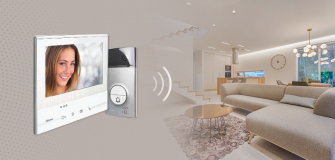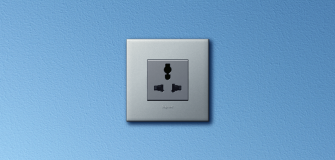6 Common Myths About Home Automation – Debunked!
Looking back at the last three decades; the Home Automation sector has grown immensely. From traditional layouts and interiors to modern devices and equipment such as smart control air conditioners, LED lights, energy-efficient and cost-saving high-end appliances, new age homes have everything.
This shift brought with it the emergence of smart homes; a home automation system that uses internet-connected devices to control various appliances like lights, security cameras, entertainment systems and more by using mobile phones or other networked devices.
But, as smart homes are relatively new territory, several people have misconceptions relating to their effectiveness, cost, how they work and why one should invest in this technology.
Since we, at Legrand, are working towards connecting millions of Indian homes to make them future-ready, we’ve curated a list of 6 common smart home myths and debunked them. Let’s take a look:
Myth 1 – Home Automation & IoT Can Be Used Interchangeably
For the longest time, “home automation” has been used as a blanket term to describe any device that eliminates the tedious process of doing household tasks.
Home automation and the Internet of Things (IoT) may be two peas in a pod, but these terms cannot be used interchangeably.
What home automation essentially means is fusing next-generation hardware and state-of-the-art software solutions to provide homeowners with complete control and flexibility to manage every aspect of their house, according to their specific needs.
At the same time, IoT refers to connecting any device to the internet and other connected devices. It is a giant network of connected things, devices and people – all of which collect and share data about the way they are used and insights from the environment around them.
If you’re looking for a user-friendly, cost-effective entry point into IoT, why not look at investing in our connected devices program – Eliot? Millions of users are experiencing a connected life every day, and you can too!
Myth 2 – IoT Is Expensive & Installation Is Tedious
Contrary to popular belief that all smart homes are expensive, in reality, they are as costly as you want them to be. For example, if a person is looking for a custom-built design with only connected devices, then the cost would undoubtedly be a little steeper than expected.
However, upgrading step by step will cause the value to vary. So if you are just starting out and are looking to step into the world of home automation, then purchasing a smart switch from Legrand would be an ideal starting point.
Arteor Smart Switches are a new way to connect your home. These switches can be controlled via a smartphone, tablet or voice control and allow you to manage individual lights, curtains, electrical appliances and more, improving user experience and providing comfort every day.
From here on out, simply install additional devices as and when it fits your budget. When it comes to the installation process, home automation products with sleek and flexible designs are effortless and can be integrated with your home quickly and efficiently.
Myth 3 – Users Need to Be Tech-Savvy to Understand Smart Devices

Another common myth that acts as a barrier to people adopting smart technology is the idea that it will be too complicated to use.
It should be noted that a vast majority of devices are either wireless or exemplify plug-and-play simplicity. Additionally, if users prefer the idea of using voice commands, adding a smart speaker to the mix can do wonders.
Once your devices are connected to your home WiFi network, easy onscreen instructions have to be followed to control appliances effectively. Even though this may seem like a daunting task, all it takes is a few clicks to turn your home into a smart one.
Myth 4 – Smart Devices Consume a Lot of Energy
Surprisingly, smart devices do just the opposite. They are designed keeping in mind power consumption, and are energy efficient. They can adjust to your behaviours and adapt to your preferences without your ever inputting a preselected schedule.
Thus, they utilise comparatively less power than conventional gadgets by continuously studying user insights and patterns to save energy.
Actual energy savings ultimately depend on the type of device you select and its automation capabilities. But on average, product manufacturers estimate the systems can help consumers save anywhere from 10 to 15 percent off of heating and cooling bills. Source
Myth 5 – Smart Home Security Can Be Breached Easily
For many consumers, the threat of stolen, personal information or the possibility of a data breach is another concern.
Most companies take extra precautions to ensure that smart devices are tamper-proof, thus ensuring security and privacy.
Still, there are a few precautions you can take as well. For example, using a secure firewall on your router and installing encryption are effective ways to safeguard information in case a hacker gains access wrongly.
It is also a smart choice to secure any devices with cameras and voice microphones thoroughly.
As with all aspects of home automation, if careful planning is undertaken, then there’s no reason not to feel completely safe within your home. At Legrand, our smart home devices are fail-safe and provide you with all the protection you need to keep yourself and family members safe.
Myth 6 – Creating a Connected Home Is Not a Worthwhile Investment
This point of view is usually raised by those resistant to spend on home automation, but as stated earlier, upgrading your home with smart technology is not always expensive.
Smart home solutions also offer worried parents a fantastic solution to keep an eye on their children when they are away from home.
On the other end of the spectrum, Home automation makes life more comfortable and secure for the elderly.
Additionally, investment in any smart device has an immediate ROI. Whether it makes your life quicker, safer or more accessible, there’s usually an instant benefit.
Beyond this, if you ever decide to sell your home, smart home technology and home automation devices can increase both the desirability and overall price. If not, then you as a homeowner can continuously benefit from using these devices yourself.
Sounds like a win-win situation to us.




















